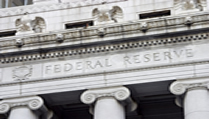Changing how banks measure counterparty credit risk exposuremay raise hedging costs for corporates.
 Last December, the Federal Reserve Board, the Office of theComptroller of the Currency and the Federal Deposit Insurance Corporationcommenced the comment period for a proposed rule updating how banks calibratecounterparty credit exposure for their derivative contracts. The proposal providesa “standardized approach for measuring counterparty credit risk” and is knownby market participants as “SA-CCR” (pronounced “soccer”). It would replace the currentexposure method (CEM).
Last December, the Federal Reserve Board, the Office of theComptroller of the Currency and the Federal Deposit Insurance Corporationcommenced the comment period for a proposed rule updating how banks calibratecounterparty credit exposure for their derivative contracts. The proposal providesa “standardized approach for measuring counterparty credit risk” and is knownby market participants as “SA-CCR” (pronounced “soccer”). It would replace the currentexposure method (CEM).
Why corporates shouldcare. At the April meeting of the Assistant Treasurers Group of Thirty, experts from host and sponsor Chatham Financialhighlighted how SA-CCR couldeffectively increase the capital requirements for banks when entering intocommercial hedging transactions with corporates by increasing the counterpartycredit risk exposure of these transactions. Under Basel III, if derivativetransactions under SA-CCR are deemed riskier than under CEM, the result will bean increase in risk-weighted assets (RWA) for banks. So it’s logical to assumethat banks would need to increase their profit margins to generate acceptablereturns on their capital—most likely at the expense of corporate clients.
Unintendedconsequences. Chatham noted that several unintended consequences couldresult if SA-CCR is enacted. Banks might need to widen their bid-ask spreads togenerate higher revenues, resulting in higher hedging costs for corporates.Corporates might also experience lower liquidity levels if banks choose toeither exit or simply reduce their commitment to the market. One participant atthe meeting noted that a “second order” consequence could be banks reducingtheir balance sheet commitments in other areas such as letters of credit orrevolving credit facilities to rationalize the increased capital requirements underSA-CCR.
State of play. Thecomment period deadline was extended from February 15th to March 18thfollowing a significant volume of reactions from market participants. Amongthose groups that supplied comments to regulators were Chatham Financial and the Coalition for Derivatives End-Users. The International Swaps and DerivativesAssociation, the American Bankers Association, the Bank Policy Institute, the SecuritiesIndustry and Financial Markets Association, and the Futures Industry Association respondedjointly.
At thispoint, the market awaits an update from the prudential regulators. Most marketparticipants would agree that the CEM needs revision but are concerned thathowever well-intended SA-CCR is designed to be, it may have some significantlynegative consequences for corporates.